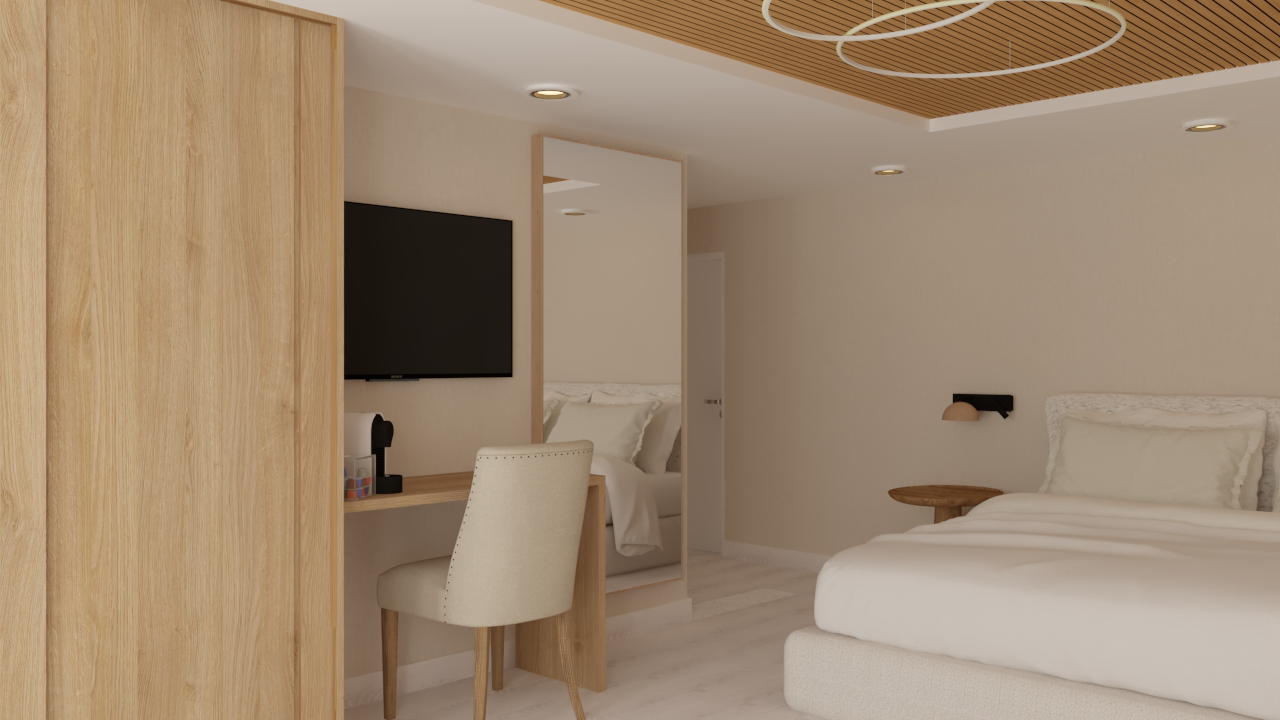
05
Apr
Hotel Room Design: 10 Key Considerations
In the world of hospitality, the design of hotel rooms plays a pivotal role in shaping the guest experience. Beyond mere functionality, it is about creating an environment that evokes emotions, sparks inspiration, and leaves a lasting impression on visitors. Let’s delve into the intricacies of hotel room design and explore the key elements that contribute to crafting truly memorable spaces.
- Purposeful Layout: The layout of a hotel room sets the foundation for the guest’s experience. It should be intuitive, maximizing space efficiency while providing seamless flow and ease of movement. Strategic placement of furniture and amenities enhances functionality and comfort.
- Comfortable Bedding: The bed is the focal point of any hotel room. Invest in high-quality mattresses, soft linens, and supportive pillows to ensure guests enjoy a restful night’s sleep. Comfortable bedding is essential for creating a welcoming and relaxing atmosphere.
- Thoughtful Lighting: Lighting design can greatly influence the ambiance of a hotel room. Incorporate a mix of ambient, task, and accent lighting to create layers of illumination that cater to different needs and moods. Dimmers and bedside controls offer guests the flexibility to adjust lighting according to their preferences.
- Functional Furnishings: Choose furniture that strikes a balance between style and functionality. Opt for versatile pieces that provide ample storage space and serve multiple purposes. Streamlined designs and thoughtful details enhance the overall aesthetic appeal of the room.
- Personalized Touches: Infuse elements of personality and local flair into the design to create a unique and memorable guest experience. Incorporate artwork, decor, and amenities that reflect the hotel’s identity and location, fostering a sense of connection and authenticity.
- Seamless Technology Integration: Embrace technology to enhance guest convenience and comfort. Offer amenities such as high-speed Wi-Fi, smart thermostats, and entertainment systems with streaming capabilities. Intuitive interfaces and user-friendly controls ensure a seamless experience for guests.
- Luxurious Bathrooms: Pay special attention to bathroom design, as it is a key aspect of the guest experience. Invest in premium fixtures, spacious showers, and indulgent amenities to create a spa-like retreat. Thoughtful details such as heated towel racks and illuminated mirrors elevate the luxury quotient.
- Soundproofing: Ensure a peaceful and undisturbed stay for guests by implementing soundproofing measures. Insulate walls, floors, and ceilings to minimize noise from neighboring rooms and external sources, allowing guests to relax and rejuvenate in tranquility.
- Sustainability: Incorporate eco-friendly practices and materials into the design to minimize the hotel’s environmental impact. From energy-efficient lighting to water-saving fixtures, sustainable design elements contribute to a more responsible and future-forward approach to hospitality.
- Accessibility: Prioritize accessibility to ensure that all guests, regardless of mobility or special needs, can comfortably enjoy their stay. Install features such as grab bars, widened doorways, and accessible amenities to accommodate diverse requirements.
In conclusion, hotel room design is a delicate balance of art and science, where every detail is meticulously curated to create a memorable guest experience. By focusing on comfort, functionality, and personalization, hotels can elevate their spaces to new heights and leave a lasting impression on guests.
